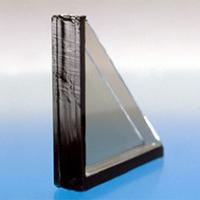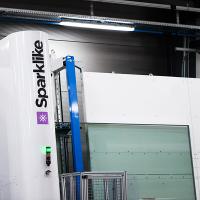Date: 23 July 2009
A new ASTM International standard provides a long-needed method for evaluating gas concentration inside insulating glass units without destroying or altering the edge seal. The new standard, ASTM E2649, Test Method for Determining Argon Concentration in Sealed Insulating Glass Units Using Spark Emission Spectroscopy, has been developed by Subcommittee E06.22 on Durability Performance of Building Constructions, part of ASTM International Committee E06 on Performance of Buildings.
"The inert gases that are often contained between the panes of glass that make up an insulating glass unit provide better thermal efficiency and reduce heat loss through the window," says Jeffery Haberer, technical services engineer, Cardinal Glass Industries, and E06.22.05 task group chair. "While the inert gas is only one component of a window that reduces heat loss, if the inert gas leaks out, the total potential to reduce heat loss is compromised."
Haberer notes that, for a test on gas loss, it is necessary to know the concentration prior to weather cycling and after. "Previously, IG units were either altered with a septum for gas sampling or the edge seal of the IG was destructively broken in order to sample the gas content," says Haberer. "Neither of these procedures lended well to the need. Until now, there was no nondestructive test method to sample gas concentrations in IG units." According to Haberer, certification groups and researchers will use ASTM E2649 to show the compliance of an IG unit to hold gas at a minimum accepted level. ASTM International standards are available for purchase from Customer Service (phone: 610-832-9585; service@astm.org) or at www.astm.org.
For technical information, contact Jeffery E. Haberer, Cardinal Glass Industries, Minneapolis, Minn. (phone: 952-928-4601; jhaberer@cardinalcorp.com). ASTM Committee E06 meets Oct. 18-21 during October committee week in Atlanta, Ga. ASTM International welcomes and encourages participation in the development of its standards. ASTM’s open consensus process, using advanced Internet-based standards development tools, ensures worldwide access for all interested individuals. For more information on becoming an ASTM member, please contact Stephen Mawn, ASTM International (phone: 610-832-9726; smawn@astm.org).
Established in 1898, ASTM International is one of the largest international standards development and delivery systems in the world. ASTM International meets the World Trade Organization (WTO) principles for the development of international standards: coherence, consensus, development dimension, effectiveness, impartiality, openness, relevance and transparency. ASTM standards are accepted and used in research and development, product testing, quality systems and commercial transactions around the globe.




















Add new comment